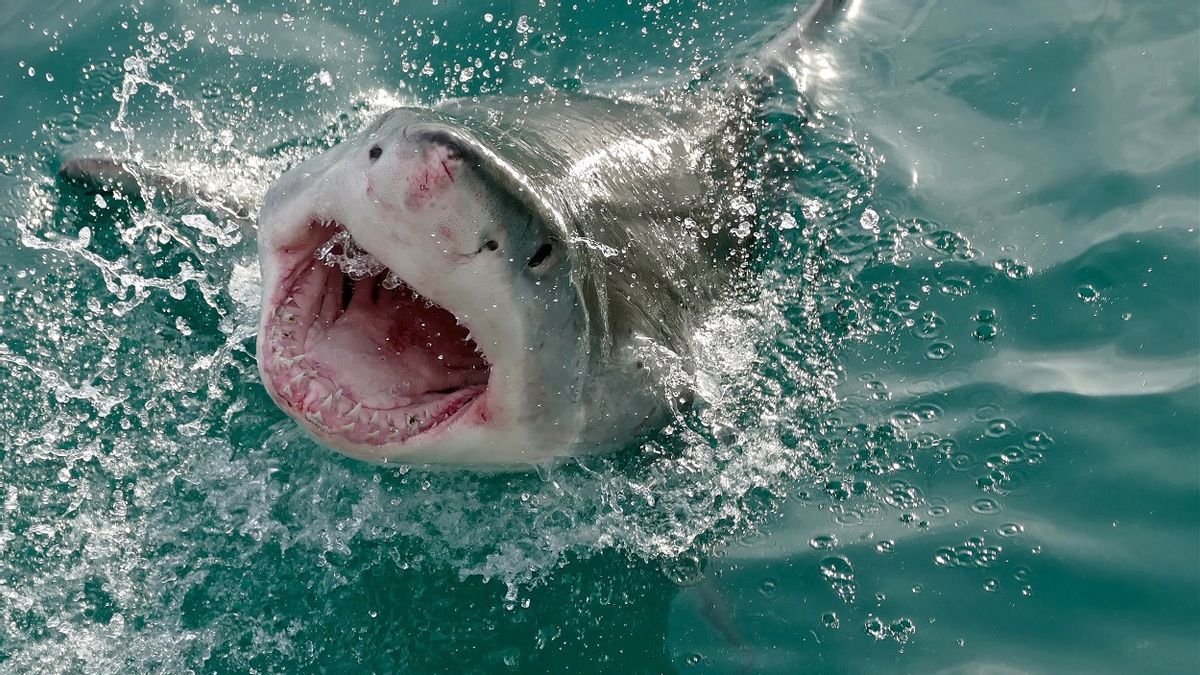JAKARTA - Not only being a great predator in the ocean, but sharks also have a number of interesting facts ranging from pregnancy to their ability to hunt prey.
Often considered horrific because of the alleged attack on humans, humans are actually also a greater threat to sharks, considering sharks can be key to marine health.
Despite its presence since hundreds of millions of years ago and continuing to evolve, sharks are also in great danger. Largely due to overfishing, shark and pari populations fell 71.1 percent between 1970 and 2018, according to a 2021 study published in the journal Nature.
Here are interesting facts about these ancient marine predators, reported by CNN August 1.
There are a total of more than 500 shark species in the world. They have a variety of sizes, ranging from the smallest, namely a dwarf-laden shark that is smaller than a human hand, to a whale shark that can grow to the size of a school bus, marine biologist Michael Heitatus, professor and dean of College of Arts, Sciences & Education at Florida International University in Miami.
Given there are so many unique species, some characteristics may be true for one species, but not for the other.
Can live for hundreds of years, sharks have one of the longest life spans compared to other animals. Greenland sharks are the most known vertebrates on Earth, according to a 2016 study published in the journal 'Science'.
Researchers using radiocarbon dating determined that this North Atlantic species is likely to live at least 272 years on average, and often does not reach maturity until the age of 150 years
Greenland sharks can live for at least 400 years, scientists estimate.
The earliest evidence of shark fossils dates back to 450 million years, meaning these creatures had existed at least 90 million years before trees and 190 million years before the dinosaurs.
Sharks have been around since before Pangea broke, said Catherine Macdonald, director of Field School and lecturer at the Rosenstiel School of Maritime Affairs, Atmosphere and Earth Science, University of Miami. (There is one giant continent called Pangea about 250 million years ago).
In addition, sharks have survived five mass extinctions, one of which is destroying about 96 percent of marine life.
Tiger sharks, one of Australia's main predators, can help the ecosystem in responding to extreme climate events. The species' mangsa, including green turtles, seabirds, and pari fish, avoid shallow water, which is often an area with seagrass. As a result, seagrass can grow to be like bushes and create a safe nursery for fish, shrimp, and crabs, Heitatus said.
Lamun absorbs carbon in the atmosphere and uses it to build its body. When the sea dies, the dead material is buried in sediment on the seabed, and carbon is removed from circulation, added Heitatus.
Researchers are currently trying to determine whether other shark species play a role in this phenomenon and whether this is happening elsewhere like coral reefs.
"It looks like this is more than just a tiger shark," said Heitatus.
"Maybe this larger species plays a big role in helping to form the ecosystem where they belong," he said.
Sharks are known to have varying reproductive patterns. On average, sharks give birth after 11 or 12 months of pregnancy. However, some sharks, such as littered sharks and sunbathing sharks, have a pregnancy period of more than three years.
Some sharks, such as mako sharks and bull sharks, gave birth directly. While other sharks, such as cat sharks, lay eggs, said Jasmin Graham, president and CEO of Minorities in Shark Sciences, based in Bradenton, Florida.
The gestational period is long, and the fact that some sharks take 10 to 12 years to reach sexual maturity, such as a great white shark, further worsens the population destroyed by unsustainable fishing practices.
Sharks are basically stationary creatures, because they have no organs to produce sound.
Instead of talking, sharks communicate through body language, such as zigzag walking, shaking, and moving his jaw.
SEE ALSO:
Sharks have a sixth sense. They can capture the nanometric electromagnetic current. These extra Indera can help them navigate the ocean, find prey to find a partner.
"No matter how small the electric ampls the brain sends to its heart to order it to beat can be detected by sharks, so they can find hidden prey quite effectively," explains Macdonald.
With this very sharp sense, sharks hunt sick and weak animals, thus playing an important role in keeping marine ecosystems healthy.
The English, Chinese, Japanese, Arabic, and French versions are automatically generated by the AI. So there may still be inaccuracies in translating, please always see Indonesian as our main language. (system supported by DigitalSiber.id)


















